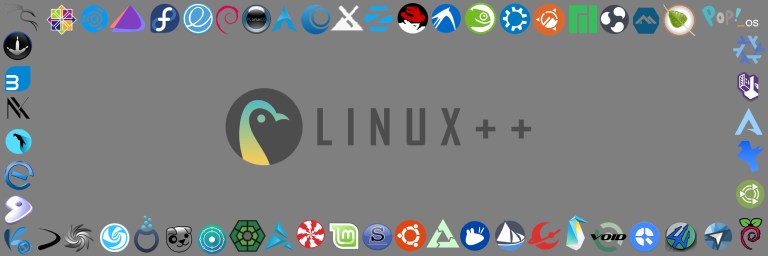
Hello and welcome to the eleventh edition of Linux++, a weekly dive into the major topics, events, and headlines throughout the Linux world. This issue covers the week starting Monday, March 30, 2020 and ending Sunday, April 5, 2020.
This is not meant to be a deep dive into the different topics, but more like a curated selection of what I find most interesting each week with links provided to delve into the material as much as your heart desires.
If you missed the last report, Issue 10 from March 29, 2020, you can find it here. You can also find all of the issues posted on the official Linux++ Twitter account here or follow the Linux++ publication on Front Page Linux here.
In addition, there is a Telegram group dedicated to the readers and anyone else interested in discussion about the newest updates in the GNU/Linux world available to join here.
For those that would like to get in contact with me regarding news, interview opportunities, or just to say hello, you can send an email to linuxplusplus@protonmail.com. I would definitely love to chat!
This issue is dedicated to my Grandma Alice, who unfortunately passed away this weekend from COVID-19 at 96 years old. She fought it all the way to the end and I’m happy that we have the technology today that allowed us to say our goodbyes via video chat. Please listen to the experts and follow their advice to stop the spread of this pandemic. The sooner we can all come together (by staying apart), the sooner this will be over. Please stay healthy and safe out there and do your part to protect those that are most susceptible to severe cases of COVID-19.

Grandma, I’m so thankful that my fiancée and son were able to meet you in person and surprise you for your last birthday. I will never forget the way you lit up when we walked in the door — that is how I will forever picture you. Thank you for being an incredible role model and always believing in me, Grandma, you will be sorely missed by all of us who love you dearly. Your memory and influence will live on through us to the end of our days.
There is a lot to cover so let’s dive right in!
Personal News
If you don’t care what I’ve been up to over the past week, feel free to skip ahead to the Community News section 🙂
Front Page Linux Announced!

As teased in the last issue of Linux++, the new project that I will be working on is Front Page Linux from the Destination Linux Network. I have formally joined DLN as a content creator, which is extremely exciting!
Front Page Linux is designed to be a community driven and open source platform to share many different types of content including news, tutorials and guides, opinion pieces, events, interviews, and hardware reviews. The best part — anyone can get involved if they wish! Just write about something that interests you and submit it to comments@destinationlinux.org and you’ll be included in the fun.
The addition of written media is an important piece of the puzzle to the Destination Linux Network. Though previously focused on podcasting and video-related content (which obviously will continue to be a major focus), now community members have the opportunity to have their voices heard without having to build their own multimedia setup.
I have to say that I’m extremely excited and grateful to be a part of DLN. The content creators and greater community are some of the best on all the Internet. Though this project is still evolving, I’m so eager to see what it blossoms into!
Of course, none of this would be possible without the support of lovely people like you. Yes, YOU. So, thank you for making this kind of opportunity available and allowing us to do what we love doing.
I’ll see you around FPL!
Community News
Linux Kernel 5.6 Released

Only about two months after the release of Linux kernel 5.5 and with a ton of hype surrounding it, kernel version 5.6 is finally here! This marks the first Linux kernel to come equipped with WireGuard support out-of-the-box, which is of course the major headline with this release.
WireGuard is a popular, fast, and secure Virtual Private Network (VPN) tunnel that will now be available to anyone running any flavor of Linux. WireGuard has many advantages over the major competitors in the space and will likely become the de facto VPN service for Linux users everywhere. If you want to learn more about WireGuard, there is an entire section dedicated to describing it in Linux++ (February 16, 2020) that you can find linked here.
Some other great features included in kernel 5.6 are USB4 support, an idle cooling thermal driver for CPUs, support for Amazon Echo smart speakers, and a new Zonefs file system. In addition, compression support for the F2FS filesystem and async discard support for Btrfs was added.
Of course, hardware support is another area that gets better and better with each kernel release. 5.6 includes support for new ARM chips and boards, Ingenic X1000 SoCs, AMD Ryzen Zen 3 processors, and the NVIDIA GeForce RTX 2000 “Turing” series graphic cards.
However, it is advised by the kernel team to wait until version 5.6.1 is released to give them enough of a window to make sure everything is working properly. Linus Torvalds even made a statement regarding how COVID-19 could potentially impact the development cycle going forward:
“While I haven’t really seen any real sign of kernel development being impacted by all the coronavirus activity — I suspect a lot of us work from home even normally, and my daughter laughed at me and called me a ‘social distancing champ’ the other day — it may be worth just mentioning: I think we’re all reading the news and slightly distracted. I’m currently going by the assumption that we’ll have a fairly normal 5.7 release, and there doesn’t seem to be any signs saying otherwise, but hey, people may have better-than-usual reasons for missing the merge window. Let me know if you know of some subsytem that ends up being affected.”
So, for the time being, it looks as though Linux kernel development has largely remained unaffected by the global pandemic, however, as always there is a chance that this could change at any time.
Congrats to Linus and the rest of the hard working kernel team for putting out an epic release and continuing to have a positive attitude through these arduous times!
Ubuntu Testing Week is Here

Yes folks, it’s that time of year again. Ubuntu 20.04 LTS, code-named “Focal Fossa”, is now less than a month away from official release, which means we’re in beta testing. This is the most important part of the release cycle for Ubuntu and its official flavors for testers to find and report all issues and bugs that they can possibly find to ensure that 20.04 comes out of the gate roaring.
Now, this doesn’t mean you have to switch your machines to Ubuntu proper. Testing out the various flavors is extremely important as well in order to find bugs specific to the flavors. However, because they share the same Ubuntu base, you will in turn be helping out Ubuntu with testing.
If you have never participated in a testing week before, the procedure is pretty simple. First, grab a daily ISO image here. Next, check out the different testcases that you can run to help out on the same page. Then run the different testcases and if you find a problem make sure to report it on the appropriate page.
Testing by a large variety of users on different hardware configurations is essential to ensuring the success of the Ubuntu family (and anyone downstream from them). Even if you use something like elementary OS, Zorin OS, or Linux Mint, they will in turn benefit from your testing.
In addition to testing out the distribution, this will be an extremely nice peek into what will be offered in the official 20.04 release. So, if you haven’t given it a spin, I highly suggest you do. This release is one of the best I’ve seen so far since I started with the distribution in 2008!
Thank you so much for your help in this time, the entire community is indebted to all the testers out there! Let’s get those bugs squashed and enjoy an Ubuntu that is the best it can possibly be come release day!
Manjaro InfinityBook Pro 15 Pre-Orders Open

Though it seems like quite a while since Manjaro first teased their partnership with TUXEDO Computers, it appears that it was definitely well worth the wait. Previously, Manjaro announced that they would be shipping a complete line of machines with TUXEDO for a variety of price points and mentioned that the first model would be based on the popular TUXEDO InfinityBook Pro.
I’m happy to report that everything they said was true. It was announced earlier this week that pre-orders for the first Manjaro/TUXEDO computer were made available online along with the specs of the machine (and some absolutely gorgeous pictures). Though Manjaro has previously shipped on different devices, this marks the first time that the popular Arch-based operating system was tweaked specifically for the hardware provided by TUXEDO. If you thought Manjaro was fast before…just wait!

This baby truly purrs with an Intel Core i7–10510U or i5–10210U four-core processor with eight threads that can run up to 4.9 GHz per core as well as integrated Intel UHD graphics. The machine can be customized with up to 64 GB of DDR4 RAM and up to 2 TB of storage via an M.2 SSD with SATA or NVME/PCIe connection.
In addition, a major selling point of the Manjaro InfinityBook Pro 15 is that of battery life. Though this can vary quite a bit depending on how the computer is utilized, TUXEDO has stated that the large 54 Wh Lithium-ion battery can last up to 12 hours without a charge.

The price of this machine starts out at 1,099.00 EUR, but can be maxed out for 1,829.00 EUR. In addition to this announcement, the two partners have stated that they are working on the second model, which will be based off of the recently released TUXEDO InfinityBook S 14.
Until then, if you are interested in learning more about the Manjaro InfinityBook Pro 15, you can check out the specs and even place a pre-order if you wish here.
Congratulations to both Manjaro and TUXEDO for putting out a stunning machine. I can’t wait to see the reviews fly in!
A Tremendous Amount of GNOME News

First and foremost, this week included an incredible April Fool’s joke planned by KDE in conjunction with the GNOME team. The idea behind the joke was to announce that both KDE and GNOME would be merging their efforts into a single project, aptly named KNOME. I was happy to take part in the event by writing a small satirical blog post entitled “The Best of Both Worlds: KNOME” that can be found here.
Though the world finds itself in an extremely difficult time right now, we thought it best to try to put some smiles on people’s faces — something we desperately need more than anything right now. And by all accounts, it was a success. So, thank you to the KDE and GNOME teams for banding together in this tough time to try to elevate people in whatever way possible. Who knows, maybe one day someone will pick it up and there will actually be a KNOME. Don’t hold your breath on that one though 😉
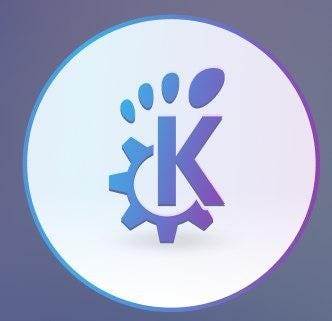
If you would like to check out the wonderful KNOME webpage, you can find it here.
Moreover, there is some really cool GNOME community-related news to share. The GNOME team, in conjunction with Endless Computers, is hard at work building an awesome community-oriented event called the Community Engagement Challenge that will be open for submissions next week. The goal of the initiative is to “encourage individuals or teams to submit stimulating ideas that will connect the next generation of coders to the FOSS community and keep them involved for years to come”.

There are three phases included in the challenge with up to $65,000 in cash prizes and other rewards to the winners of each phase. The phases are outlined as such:
- Phase 1: Idea; written proposal with entry description and team background.
- Phase 2: Proof of concept.
- Phase 3: Sample Product.
There are no limitations on entry ideas — only that which your imagination can dream up. So, for all you interested programmers out there, put on your thinking caps and apply your ideas to a project that is fun, educational, engaging, creative, and unique!
If you would like to learn more about the Community Engagement Challenge, visit the official website here. I can’t wait to see all the awesome entries that will come in and help push the boundaries of FOSS even more!
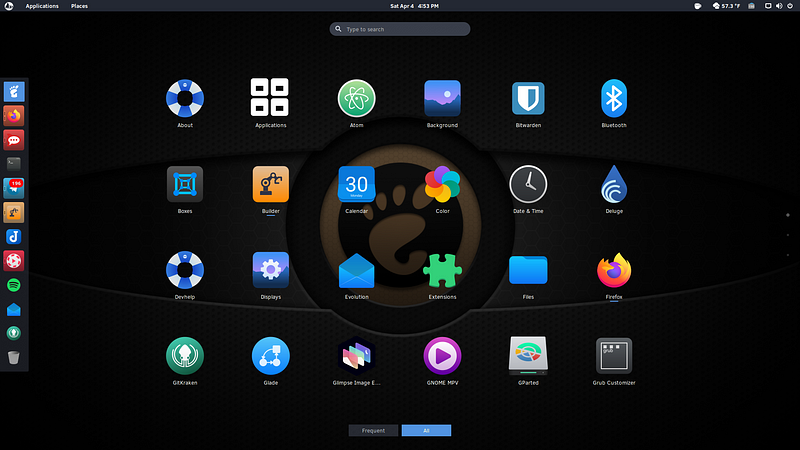
On the technical side of things, GNOME 3.36.1 was just released with quite a few improvements made over the last three weeks since GNOME 3.36 LTS became available. To keep this short, you can find a detailed changelog of all the improvements to GNOME and the surrounding ecosystem here. Check it out and, of course, update if you have the opportunity!
It is also noted that this point release is dedicated to all community members who have been affected by the COVID-19 pandemic. Michael Catanzaro of the GNOME Release Team had this to say about 3.36.1:
“This release is dedicated to community members who have been impacted by COVID-19. Our thoughts are with you during this difficult time.”
In addition to the release of GNOME 3.36.1 was the announcement of the development team’s plan for the next iteration of GNOME, 3.38. This next release is code-named “Zacatecas” after the Mexican city that will host GUADEC 2021.
As always, the major release will be developed under the 3.37.x series over the next five months. The first public testing of version, 3.37.1 is scheduled to be released later this month on April 25th. There are several “milestones” that will take place in the release cycle with the first 3.38 beta version scheduled for release in early September and the final release slated for September 16, 2020.
If this release is anything like the last few GNOME releases, then expect some massive performance enhancements to Mutter (the GNOME window manager) and the Shell itself as well as across the greater GTK ecosystem.
Speaking of Mutter and the GNOME Shell, the team behind the two projects just released their monthly report entitled “This Week in Mutter and GNOME Shell”, where they detail the work that has happened over the past month on the two flagship GNOME products.
This month, the GNOME developers made several improvements to the newly-introduced Extensions application. In particular, the Extensions codebase is being moved out of the Shell’s which will allow it to expose fewer interfaces through D-Bus. Some small bugs related to crashing were fixed in the 3.36.1 point release, with one of the main fixes being that the blur effect now works properly with fractional scaling.

As far as Mutter, the window manager received several fixes for window streaming support. In addition, work on Wayland support was also reported including an issue with new windows being in the wrong position, issues with pasting images from Firefox, and a peculiar black border around resized Xwayland windows. With X11, Mutter was fixed to respect manual configuration of RandR panning as well as a bug that prevented correct monitor scaling. Additionally, Mutter now respects the “middle mouse button” emulation setting that is exposed through GSettings. Awesome job, GNOME developers, keep up the hard work!
If you would like to check out the official blog post by the GNOME developers, you can find it here.
And finally, on this past Friday, it was announced by Neil McGovern, Executive Director of the GNOME Foundation, that GUADEC 2020, the annual GNOME Users and Developers Everywhere Conference, will no longer be taking place in Zacatecas, Mexico. Due to rising concerns over the COVID-19 pandemic, the conference has been transformed into a completely online event that anyone is welcome to join.

This was announced on the official GNOME News blog along with a personal statement by Neil himself:
“Although over three months away, there is no way we could ensure that the event could continue in a way that would keep our community safe. It is with a heavy heart that, after consultation with the local organizing team, we won’t be visiting Mexico with GUADEC this year.”
Though the usual in-person gathering will no longer be taking place, the wonderful people behind GNOME ensure that they will do everything in their power to make this online event as good and engaging as possible. We are lucky to live in a world with technology that can make something like this happen.
If you would like to read the official announcement from Neil McGovern, you can find it on the GNOME discourse here.
On a personal note, I was planning on making GUADEC 2020 my first conference attendance and an incredible opportunity to meet all the wonderful people behind GNOME in person, so I’m certainly sad about this news. However, I’m extremely grateful that GNOME is making the absolute correct choice regarding the safety of the community. It will still be awesome to hear the great talks from the other GNOME members and spend some quality time getting to know everyone in whatever capacity is made available.
Phew…I told you it was a tremendous amount of news…onwards!
Linux Mint 20 “Ulyana” Announced

After two years with the Linux Mint 19.x series, Minters everywhere will soon be able to update to the newest Linux Mint 20.0 “Ulyana”. Linux Mint follows the LTS release cycle of Ubuntu, meaning that 19.x was based on Ubuntu 18.04.x LTS “Bionic Beaver”. In the near future, Linux Mint 20 will be based on the highly anticipated Ubuntu 20.04 LTS, code-named “Focal Fossa”.
With this new upgrade comes plenty of improvements by the Mint team including the default Linux kernel 5.4 LTS and the Cinnamon 4.6 desktop environment with better fractional scaling as well as a choice available of setting your monitor refresh rate in the Display Settings menu. Of course, the new file transfer tool, currently known as “Warpinator”, will ship out-of-the-box with Linux Mint 20.
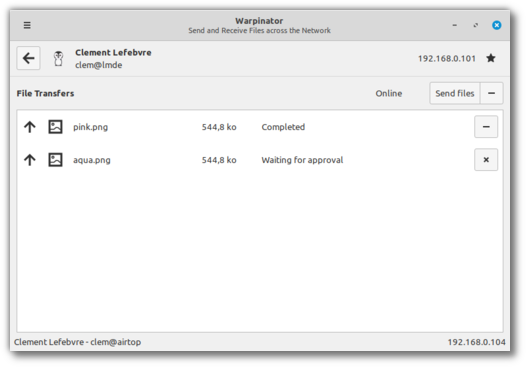
In addition, it looks like Nemo (the default Cinnamon file manager) is getting some heavy improvements, mostly focused on thumbnail generation. They are doing this by showing generic icons prior to the thumbnails loading, which should improve navigation of the file manager considerably. However, if you’re not particularly a fan of the Cinnamon desktop, Linux Mint 20 will also ship with a MATE and Xfce version per usual.
One drastic change that the Linux Mint team implemented is that there will no longer be support for a 32-bit image. From here on out, Mint will only include 64-bit support with their distribution. However, if you are on older hardware that requires 32-bit support, you can stay on Linux Mint 19 until its end of life in 2023.
At the time of this writing, there is no scheduled release date, however, if we look at past releases, we can expect it to be delivered sometime around June, barring no delays.
I can’t wait to see what the Mint team cooks up with this one. It is sure to be an incredible release and improvement upon the 19.x series. If you would like to check out the March update blog post by the Mint team to dive deeper into what they’ve been working on, you can find it here.
Pine64’s PinePhone with Ubuntu Touch Available!
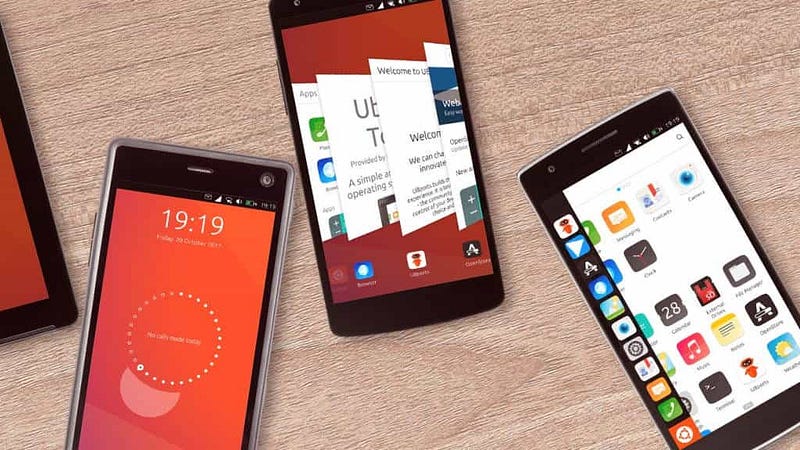
Well, here is some awesome news for Linux mobile lovers everywhere. It was announced this week that UBports, the company that has continued Canonical’s vision of Ubuntu Touch, will be shipping on the first community version of Pine64’s PinePhone. Pre-orders for the PinePhone UBports Edition are currently open, which is extremely exciting!
A statement by Pine64’s Lukasz Erecinski shows just how close the two organizations are:
“UBports were among the very first to embrace our initiative and offer their support for the PinePhone. Together with their friends and colleagues from other projects, UBports developers have now become an integral part of Pine64, actively shaping our goals and aspirations. It is therefore very fitting that the UBports Foundation will be the first partner in our Community Edition scheme, in which we will ship a customized PinePhone with UBport’s operating system and donate all profit sales to the foundation.”
As per the previous developer’s edition of the PinePhone, the UBports Edition ships at a mere $150. In addition, for every phone sold, $10 dollars of the price will go directly to the UBports Foundation. So, not only can you support the awesome people at Pine64, but you can also support the incredible work done by the UBports community with your purchase.

Now, by far the most exciting announcement with this release is the functionality that is expected out-of-the-box with the new PinePhone. In essence, all the essentials now work including voice calls, SMS messages, GPS, LTE, GPU hardware acceleration, Wi-Fi, and Bluetooth. Just plain awesome!
However, there are still a few points that are lacking including functionality on both the rear-facing and front-facing cameras, battery power and efficiency, and USB host connectivity, which are all continuously being worked on by the UBports community. In addition, the UBports Edition of the PinePhone will ship with a custom case that includes the UBports logo printed on the back at no extra cost.
Now, if you are more excited about other Linux-based mobile operating systems, fret not — this is only the first community version to be made available. Others will ship with a variety of different mobile operating systems in the future.
If you would like to read more about this new offering from Pine64 and UBports, check out the official announcement here. In addition, if you would like to pre-order the new PinePhone UBports Community Edition phone, you can do so here.
SUSE Brand Refresh

Over the years, we have seen quite a few Linux companies modernize their brand from Canonical’s Ubuntu to Red Hat and System76, a brand refresh can be invigorating and a period to reflect on one’s goals and create a more concrete vision of the future. This week, SUSE announced that they too would be modernizing their brand in conjunction with their future efforts.
SUSE has created the tagline “Celebrating the Power of Many” to encapsulate their new direction with the brand. They state that the power of collaboration between themselves and their customers, partners, communities, and teams has allowed them to become a pioneer in the Linux enterprise space. In essence, they are looking to improve these relations and moving towards the future with renewed vision.
The new brand was created to “capture our heritage, reflect our growth, and signal our passion for the people, teams, and organizations that we serve”. This entire identity was reworked by an interdisciplinary team of brand strategists, designers, and even neuroscientists! At its heart, the new brand “illustrates how SUSE and our amazing communities and customers are all connected. It shows the clear path that SUSE provides a simpler, more powerful technology that make organizations run better.”
The new brand efforts are planned to go live on April 30th. I have to say, I really enjoy the new playful and modern brand identity. I wish nothing but the best to the awesome employees and community members of SUSE. It definitely looks like their future will continue to be extremely bright!
If you would like to learn more about the details guiding SUSE’s brand refresh, check out the official webpage here or the video embedded below:
Community Voice: Aleix Pol i Gonzàlez

This week Linux++ is very excited to welcome Aleix Pol i Gonzàlez, President of the KDE e.V. Board and Plasma developer (among other KDE projects). Aleix has been programming with Linux since his high school years and has a wealth of knowledge on the architecture of so many vital components that make the KDE ecosystem work so well. He has fostered a love for FOSS from an early age and his life is dedicated to providing the best possible products and applications for free, for everyone.
Currently, at KDE, he has been spending much of his time improving Wayland support for the upcoming Plasma 5.19 release, which is sure to be very exciting for Plasma users everywhere! So, without further ado, I’m happy to present my interview with Aleix:
How would you describe Linux to someone who is unfamiliar with it, but interested?
“Linux and Free Software in general have solutions to make sure electronic devices can be properly used. The Linux Desktop is what we’ve come up with for initially desktop computers and now laptops as well as several other smaller devices such as tablets and much beyond.”
What got you hooked on the Linux operating system and why do you continue to use it?
“The philosophy around Free Software was enticing to me since the beginning and a big part of why I adopted it. Being able to get in control of the system was one of the main things that drew me to it and getting closer to its development has only increased my interest.
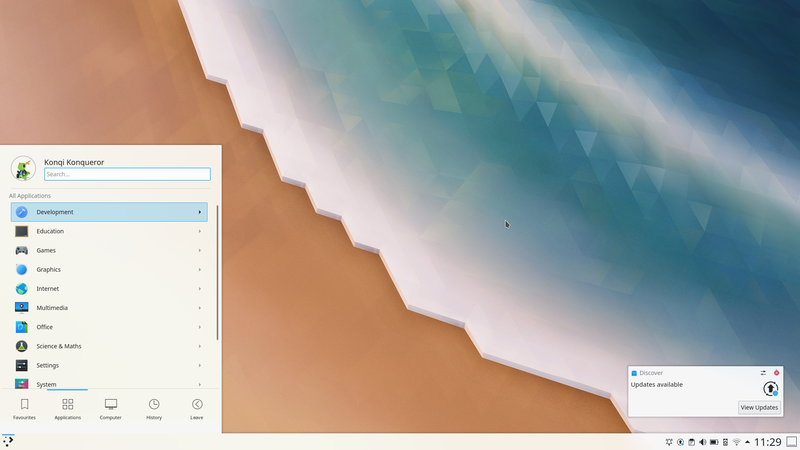
Reasons nowadays have evolved. For one, I’m developing KDE and Plasma for a living — it would be weird for me to use something else. Also, it’s what I know how to use, I don’t need to look elsewhere other than to see what others are doing.”
What do you like to use Linux for? (Gaming, Development, Casual Use, Tinkering/Testing, etc.)
“This question is to me ‘what do you use a computer for?’, and well, it’s mostly to do my job as a software developer. Also, all my other tasks, for example, on KDE e.V. Board, presentations in conferences and else are also performed from my Linux system.
The only place where I’m not using the usual GNU/Linux desktop is on my phone, for now, where I’m using Android, so can’t say it’s not Linux either.”
What is your absolute favorite aspect about being part of the Linux and open source community?
“It’s interesting to be part of such a welcoming community. People get to come from all over the world and collaborate to create something in the shared interest. That’s brilliant, it’s what so many utopians dreamed of decades ago.
Even now, when our meeting abilities are impaired by COVID-19, we get to find ways around it. We have always been a decentralized community and still manage to work on full steam.
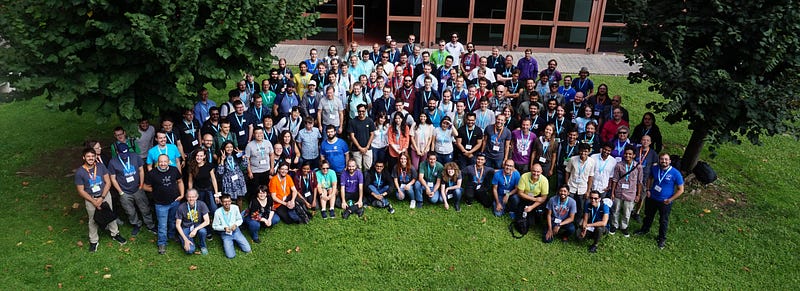
That said, I’d say Akademy, our yearly gathering, is one of the most rewarding aspects of being part of the community as well. Being able to just socialize with people from all over the world and see how Free Software affects their life is great.
It doesn’t end in KDE though, I’ve had plenty of good interactions with people from across the border of the Linux and FOSS world at large. In Linux App Summit, GNOME, FreeDesktop, Debian, SUSE, Arch Linux, FSFE, Barcelona Free Software, etc. I’ve found great people to both work and have a beer with.”
Do you prefer a distribution (or family of distributions) that you find yourself being drawn to most and why?
“I generally shy away from the distribution discussion. I find it quite boring honestly and it doesn’t bring much to the table.
Both on the systems I set up for me and for my friends and family, I generally try to go with whatever will bring the best experience using KDE’s Plasma including the latest stable releases.
It’s especially delicate on my development system, where I can’t generally use most of the software provided by the distributions as is, since it’s generally useful to have it compiled in place from master upstream git sources rather than just to use a binary from the distribution, which is more convenient to use but less so to tinker with.”
What is one FOSS project that you would like to bring to the attention of the community?
“I’d say nowadays, we’re seeing a lot of changes on the phone front. The big reason there is that ARM is slowly becoming a viable platform for FOSS. We’d seen the Linux kernel running there for a while, but it was very hard to create products that sustain over time. We’re seeing a lot of interesting development in mesa, the kernel, and how manufacturers are doing things that give us such possibilities.

So far, we’ve seen it as the phone offering booming, which is very important in itself. It’s a sector of the consumer electronics we are interested in and for good reasons. I can also see this change having an impact beyond, too. Both on laptop devices and in general in being able to create good products based on good hardware and our Free Software stack without ad-hoc tinkering of weird binary blobs or sticking to random weird Linux kernels from the past.”
Do you think that the Linux ecosystem is too fragmented? Is fragmentation a good or bad thing in your view?
“Is the community fragmented? It’s not going to be me advocating for everyone thinking the same, and I doubt anyone actively contributing to the products would. It’s important that people get to work on what they believe is important. They need to be doing it together, at once.
I do resent the people whose only contribution to the movement is to outline differences and just complain destructively about things rather than constructively. Over time, I’ve found they’re just everywhere in the world and we probably need to live with it, but that’s fine.
That said, we should all make an effort to work together unless one has good reasons to do so besides skipping interaction with some people across the board.”
What do you think the future of Linux holds?
“If the last month has taught us anything, it’s that predictions are more an intellectual game than anything with real added value.
In any case, I’m confident that Linux and FOSS — we’re here for the long run. If anything its usage is ever increasing. While years ago we were talking about how our products were better than the closed counterparts, nowadays many FOSS components are mainstream and being used by virtually everyone.”
What is your absolute favorite part about working on KDE’s projects?
“It’s been mostly the impact of working on something that’s used by lots of people to enjoy and benefit from. Seeing projects built using KDevelop has always made me feel proud of my involvement on the project.

Seeing Plasma being used in super relevant deployments where people are doing important scientific or artistic work is worth spending my time making sure it works even better every time.
Seeing students use the software we create for KDE Edu to learn or just to practice their homework will easily bring a smile on my face any day.
Being able to offer all of that to my family, friends, organizations, and governments to enjoy without restrictions is fantastic.”
Are there any KDE Plasma specific features that you think sets it apart from other distributions? Is there a particular “target audience” that KDE is trying to reach with Plasma?
“Plasma is not unique in the problem it tries to solve for others. We’re making computers accessible to people: students, doctors, scientists, casual usage, etc.
We do have a lot of systems set up, so you’ll get to use it comfortably, adapting it to your needs and your people or just making it pretty to your eyes.
On top, we have several teams that ensure it works properly for everyone. Our KDE Visual Design Group does an outstanding job to make sure it works comfortably and happily. The KDE Translation teams make sure all the software is available to everyone from any origin and culture.
What’s not to love?”
How did your adventure into developing for Linux come about?
“While in high school, I knew I wanted to make software and that GNU/Linux was something that was part of what I wanted to master. Once I was using it full time and kept developing, it became the logical outcome. My first project was KAlgebra that I started to develop outside of KDE. I then joined KDE and started working on KDevelop, including a few GSoC internships on it.
Meanwhile, I was working as an intern in my university (Universitat Politècnica de Catalunya) in a mathematics department, where they were developing a Qt application for the research they were doing. Over there, I also worked doing mostly the same things I did in KDE: C++, Qt, cmake. It was cross-platform too.

When I finished university, I started working for Blue Systems and there I do the same again. On more general components which are closer to the system maybe, but still Linux, still Qt.”
What has the role of President of the KDE e.V. board been like? Any rough bumps in the road as well as periods of absolute enjoyment?
“I’ve only been President since last September. I was Vice-President before that, it hasn’t been all that different. In the end, within the Board, we are a team and we work together.
Rough bumps? Well, there’s been a world-wide pandemic and we’ve had to step on the brakes with in-person meetings. We are working hard to make sure Akademy 2020 will happen in the best of conditions. But, it’s all going good, we are learning a lot, we have great people at KDE.”
Is there anything exciting planned for the future of KDE, without giving too much away?
“I’m glad to see KDE continue growing. We’re going to be 25 next year and we have young people joining us and working together. Some of the newcomers are much younger than the project!
As for specifics, I’m glad to see our apps growing beyond our desktops, too. Moving to mobile and touch-friendly through Plasma Mobile and Android. Also, many of our applications are available on other OS’s stores. Our work reaches more people than ever and our production of free software can continue to improve in a distributed and coordinated manner.

I think that Plasma Mobile is especially important to mention here. It allows to translate the good work we’ve been doing on the desktops to an increasingly important form factor. It’s especially relevant for how it relates to our vision to provide good software that respects privacy — there’s a fight to have there and it will be hard.”
Do you have any major goals that you would love to achieve in the near future related to your involvement with the Linux community?
“Just everyone be carefeul with COVID — take precautions. If you happen to be home and want to do some good KDE work, I’ll be happy to help.
On an more technical level, I’ve spent a considerable amount of this confined time in making Plasma work better on Wayland. It will probably be my biggest contribution to Plasma 5.19. I’m quite excitied to see it happen.”
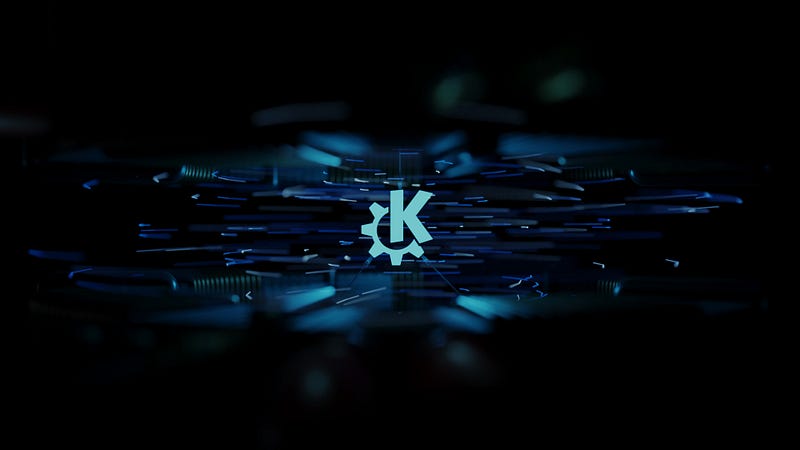
I just want to wholeheartedly say thank you to Aleix for taking time out of his extremely busy schedule to prepare an interview with Linux++. I think it is extremely important to listen to the guidance and perspective of people who have been working on Linux for decades and are heavily ingrained in the developer ecosystem. Aleix is extremely friendly and so incredibly smart and talented, it is a joy listening to his perspective on Linux and Free Software in general. I wish nothing but the utmost success to Aleix and all of those over at KDE and beyond in the FOSS world. I have to say: thank you for everything that you work on. It is so impactful and engaging. Keep up the incredible work!
Explore Linux Distributions
Often times when a new user comes to Linux, they are overwhelmed by all the choice that is available compared to proprietary operating systems like Windows or macOS. To help people not only understand what the different distributions mean, but which ones might be best for them, I will do a short summary of some of the most popular distributions from time to time. First up: Debian.
The Granddaddy of Them All: Debian
If you’ve explored the different “major” Linux distributions from which many other distributions have descended, there is no doubt that you have run into Debian at one point or another. Debian is one of the oldest Linux distributions in existence and continues to be one of the largest FOSS projects in the world.

Debian dates back to 1993 when creator Ian Murdock envisioned an easier way to bring Linux to the masses. Murdock named the distribution by combining his name with that of his then-girlfriend’s. So, in essence, Ian + Debbie = Debian. Over the nearly 30 year lifespan of the Debian Project, it has risen to become the most popular choice, especially as a base for other distributions in the Linux world. In fact, the most popular Linux distribution in the world today, Ubuntu, is based off of Debian.
This means that Debian is the “parent” (or “grandparent”) to such a wide variety of distributions including, but definitely not limited to, all of the Ubuntu flavors (Kubuntu, Xubuntu, Ubuntu MATE, etc.), MX Linux, Pop!_OS, elementary OS, Linux Mint, Kali Linux, Zorin OS, KDE neon, SparkyLinux, Netrunner, BackBox, and Bodhi Linux.
Prior to Debian’s creation, the most popular Linux-based operating system was the Softlanding Linux System (SLS), which became the basis for Slackware, a very popular distribution for desktop Linux in the earliest days of development. In turn, Debian was created to solve some of the critical issues with SLS and soon began to blow up in popularity.

Debian’s growth is attributed to its use of the Internet in its development from the very early days. Even today, there is a massive network of mailing lists for every aspect of the project, which is where the majority of development discussion takes place. Debian also uses Internet Relay Chat (IRC) for some areas of development that require quicker communication between developers.
As with all FOSS projects, Debian is developed in the open, which means the entire source code is not only available to be viewed by anyone, but can also be altered, built upon, and re-distributed. Due to the fact that Debian contains a wide variety of software, many different types of licenses are found within the project, with the most common being the GNU General Public License (GPL), the GNU Lesser General Public License (GLPL), the Modified BSD License (modified BSD), and the Perl Artistic License (Artistic).
For a long time, Debian refused to ship with any kind of non-free or proprietary software, however, that has changed as the Linux ecosystem has evolved. Today, the option to install “3rd party” or non-free software exists within the installer, allowing users to utilize specific proprietary hardware drivers and other closed source software products if they wish.
Debian ships with the GNOME 3 desktop environment by default, however, it is very easy to choose your preferred desktop environment via the net installer. Officially supported desktop environments include KDE Plasma, Cinnamon, MATE, Xfce, Budgie, LXQt, LXDE, and Enlightenment.
One aspect that makes Debian very different from many popular distributions today is the release cycle. Debian was built to be rock solid stable, which means that the current release will continue with the same software, only receiving important security upgrades, for two years. This is incredibly useful in the server space when you don’t want your environment changing very much or very often — you just want it to work the same way each time you log in. The current stable version of the distribution at the time of this writing is Debian 10.3 “Buster”.
For personal computer users, this can be a bit more difficult, especially if you rely on the latest software for your work. It was for this reason (among others) that Ubuntu was created with its six month release cycle and rolling release distributions like Arch Linux (and Arch-based distributions like Manjaro), Solus, and openSUSE Tumbleweed are gaining much more widespread popularity, especially among advanced desktop Linux users.
These days, the word “stable” does not necessarily mean “less likely to break”, but more so “less likely to drastically change in some way”.
Along with the stable branch of Debian are two different branches that can be used, though they are not recommended for every day users. These include the “testing branch” and “Sid” (aka the unstable branch). Debian Sid acts like a traditional rolling release distribution in that it provides the latest software available to users as soon as possible. The testing branch also receives the latest software, however, it takes a bit longer as the software is first run through Sid to make sure it works before landing in the testing branch and eventually the stable branch.
Another major feature unique to Debian and Debian-based distributions is the default package manager: APT (Advanced Package Manager). APT is the mechanism through which most users of these distributions are able to install a wide variety of software that is available in the Debian repositories. Software available strictly for Debian-based systems are packaged in specialized .deb packages, which can be installed through APT. APT can be used via the command line or a GUI based installer known as the Synaptic Package Manager. However, with the rise of universal packaging formats like Flatpak, Snap, and AppImages, availability of software outside of the Debian repositories and .deb packages are available to users as well.
Debian is truly a marvel of software engineering and will likely continue to be the most popular distribution to use as a stable base for other distributions. The APT system is one of the easiest and most intuitive package managers for new users and veterans alike. In addition, Debian will run your servers like a boss.
I hope that this short description was helpful to some. The Debian ecosystem is vast and there is always something new to learn about it. If you would like to explore more about Debian, check out their official website here. The documentation for the distribution can be found here. If you would like to give Debian a spin for yourself, the ISO images can be found here.
I hope that this short description will be helpful to some that are trying to navigate the space of Linux distributions. I will continue to do this every so often, beginning with the most popular base distributions and then going deeper into other popular choices.
Next up is Arch Linux, so stay tuned!
Linux Desktop Setup of the Week
This week’s selection was presented by u/KrunaStojkovic in the post titled [Plasma 5] Dark Plasma Theme “Breeze-Noir-Dark”. Here is the screenshot that they posted:

And here are the system details:
OS: KDE neon
DE: KDE Plasma 5
Theme: Breeze-Noir-Dark, Breeze-Noir-Dark-GTK
Icons: Breeze-Noir-White-Blue
Wallpaper: Desert Blue
Thanks, u/KrunaStojkovic, for one of the best looking Plasma themes that I have seen in a while!
If you would like to browse, discover, and comment on some interesting, unique, and just plain awesome Linux desktop customization, check out r/unixporn on Reddit!
See You Next Week!

I hope you enjoyed reading about the on-goings of the Linux community this week. Feel free to start up a lengthy discussion, give me some feedback on what you like about Linux++ and what doesn’t work so well, or just say hello in the comments below.
In addition, you can follow the Linux++ account on Twitter at @linux_plus_plus, join us on Telegram here, or send email to linuxplusplus@protonmail.com if you have any news or feedback that you would like to share with me.
Thanks so much for reading, have a wonderful week, and long live GNU/Linux!

Be the first to comment at forum.tuxdigital.com